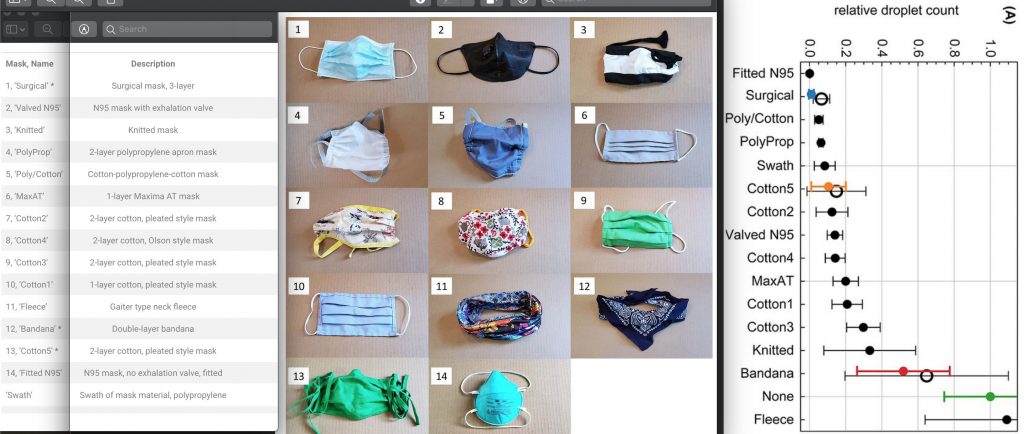How well different masks work at stopping airborne droplets
During the COVID-19 pandemic, people have come up with some creative ways to protect one another from the tiny airborne particles (droplets) that come from our mouths and noses. There are some which are funny, some political, others just making a statement. There are a lot of materials one can use to make their own mask due to the unavailability of the ones which are considered the gold standard: a fitted, non-vented N95 mask.
Science Advances has a great post up about how well different masks work at filtering the droplets from our mouths. The results are really very accessible, except for one aspect: You can’t readily read the chart and figure out which mask (based on its picture) is being described. So I’ve quickly thrown together a bunch of overlaid screenshots which show the numbering and the description next to the numbered pictures and the chart, all in one.
There’s a few more improvements I think should be done:
- Show a magnified view of the weave of each material embedded into the corner of each picture, otherwise it’s impossible for a fabric layperson such as myself to really understand what these materials are like.
- Increase the number of the participants.
- Show the text of the common speech given during each trial. For example, “The quick brown fox…” doesn’t include various sounds which may produce more droplets, such as the “ch_vowel_” sound or especially “sp_vowel_.”

